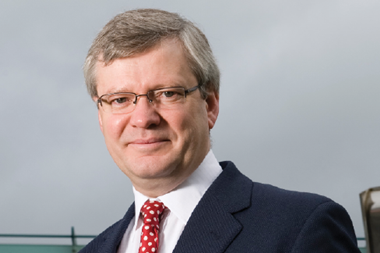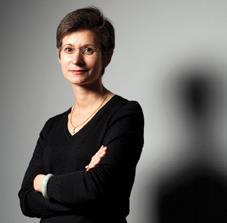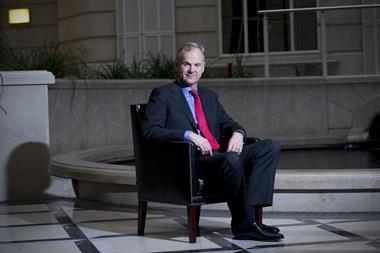At sea, there’s no hiding place from possible disaster. The head of risk at Electrolux, Lennart Edström, thanks his early years in the Merchant Navy for helping him keep business afloat today
A lot of what Lennart Edström understands about risk, he learnt at sea. In 1977, at the age of 20, he began a first career of 13 years in the Merchant Navy. Now he is head of group risk for Electrolux, the world’s second-largest household appliance company.
The Merchant Navy taught Edström a lot about personal risk. He recalls a time when he narrowly avoided injury. “One of the ships I had been working on sank in the North Sea off Hartlepool in the UK, as a result of a dangerously flammable cargo being loaded with a pulp and paper shipment.”
Rising to the rank of officer, Edström mastered the art of navigation and shiploading aboard cargo vessels and bulk carriers, mainly sailing out of Gothenburg in Sweden and Singapore. But in 1988, when his wife gave birth to their first daughter, Sophia, Edström decided it was time to head for shore.
“I would like to be back there, but you always forget about the bad times,” he tells StrategicRISK. “I learned a lot about risk in those days. When you’re on a ship, you can never hide away from risk. You cannot delegate it or skip it. You have to face up to it.”
The wilder shores
Edström’s first foray into the realm of professional risk management was with WASA Insurance, a Swedish underwriter. He worked in its industrial and marine division, mainly on cargo claims. In 1995 a position opened up at Stora AB, a Swedish-Finnish pulp and paper maker with roots going back to the 13th century. “The risk manager there hired me for marine risk management and loss prevention,” he explains. “I would follow the cargo to find out where the claims occurred and then I’d see what I could do to rectify the situation.”
In 1997 Stora’s group risk manager left and a golden opportunity presented itself to Edström. “My experience working on the ships was really valuable. Moving into group risk management, however, I needed to scrub up on lots of insurance topics that I didn’t have much experience with, like property and casualty, directors and officers, crime and fidelity.” Fortunately, it wasn’t all “rocket science”, Edström says. “I learnt quickly.” Despite his limited knowledge of technicalities, he did not lean on brokers for support. “If I’d been smart I would have used brokers much more. But I didn’t. I did much of it myself.”
Seeing that the company was spending a lot on insurance, Edström decided to start implementing higher deductibles for the paper mills. “We said to the business units: ‘This is your business and you are going to have to take care of it’. We asked them to record loss statistics and report back to us at group level.”
It was tough at first, he says, because the individual mills saw risk management as a drain on their profits rather than a long-term risk mitigation measure. Despite initial resistance, the business quickly began to record marked improvements. “Some of the mills started to have zero claims a year, down from 100 or so,” remembers Edström. “Giving the mills ownership over the risk was the key. In the beginning, they didn’t want to implement the retentions but they would never want to go back.”
In 2005, Edström was headhunted by one of Sweden’s iconic brands, Electrolux. “I started as group risk manager,” he says. He was inspired to join the company by a clear commitment from the senior management.
“In one of my interviews for the job, Electrolux’s chief executive and the chief financial officer sat down with me for one and half hours and we talked about risk management. Every quarter I have a meeting with the chief executive, chief financial officer and head of legal. If I have a difficult decision, I can anchor it in the group’s executive management. That makes implementing it a lot easier.”
“If there’s a negative claims development in one of our product divisions, for example, I might need to heavily increase their premium contributions,” he explains. “The operations will be reluctant to do that and they will lobby back. If I go to the senior bosses and they can give me the go-ahead then I have a strong foundation for implementing that change.
“It means I can say to the business unit: ‘This is what I propose you do to rectify your premium. If you don’t make these changes then I’ll increase the premium again.’ It could be a product liability or quality issue. Or it could be that one division has a loss prevention strategy that doesn’t match up with the group’s.”
As well as the group insurance programmes, Edström takes responsibility for loss prevention, specifically property and business interruption. “We had some big losses in the late 1990s,” he says. “A plant in Hungary burnt down, it was built up again and it burnt down again a year later. A plant in Warburton in the UK was also completely burnt down in 1999. We had to lease a warehouse for 15 years.”
Following these catastrophic losses (and the ensuing problems getting insurance cover) Electrolux’s board “handed over a big bag of cash” to the risk management department and asked Edström to make it stop. The result was Electrolux’s Fire 2000 programme to get the protection level on its facilities worldwide up to scratch. “Now we haven’t had a claim for some time and we are an attractive risk for the insurance market,” Edström says. “We still have the momentum within the group to work on loss prevention. It’s almost part of the group’s DNA now.”
Product safety also falls under the risk management remit at Electrolux. “Although we are not responsible directly for product safety – that’s Operations’ responsibility – we are responsible for reporting all cases to the top management,” Edström explains.
Sector product safety advisory committees report any issues quarterly into the group product safety advisory committee, which Edström chairs. He then flags up any serious issues before quarterly risk committee hearings.
Electrolux’s corporate security chief also reports to Edström. “Among other things, he looks after the personal security of the top management,” he says. Something that is particularly pertinent as the group is currently mulling over an acquisition in Egypt.
Captive control
The group’s captive operation is another area over which Edström takes ownership. “We have two captives today,” he says. “A couple of years ago we had four. We transferred the portfolios from our Dublin- and Luxembourg-based captives into a new Swedish captive, where we write property and business interruption, casualty and business travel.
“In the USA, we write casualty and workers’ compensation through another captive. We have big retentions, which means we have much better ownership over the risks.”
Unlike some other white goods manufacturers, Electrolux does not write third-party business through a captive. “That’s a conscious decision,” Edström says. “The captive is there to support the core business, not to make money.”
As a senior risk management professional, Edström isn’t alone in having a few issues with the concept of enterprise risk management (ERM). His main bugbear is the way that consultants sell ERM into companies. “I’m of the firm opinion that these issues should be owned by the company because every company has its own set of risks,” he says. “Consultants can advise but ERM needs to have buy-in from the operations and grow organically rather than being imposed externally.”
In his view, senior management should set the organisation’s risk appetite and risk managers should implement the strategy. “Maybe there are some ambitious risk managers who would like to take control over all aspects of risk, but I think it is wrong,” he says.
It is easy to see how Edström’s philosophy has been shaped by his time at sea. As a ship’s captain has to scan the horizon for danger, risk management is all about being proactive and avoiding risks before they strike, he says. With that mentality (and a bit of luck), he thinks risk managers should be able to avoid icebergs. SR
Company profile
2nd
largest household appliance company in the world
40m
products sold by Electrolux to customers in 150 countries every year
53%
jump in profit to SEK4bn (€453m) in 2010
54,000
employees in 2008



















